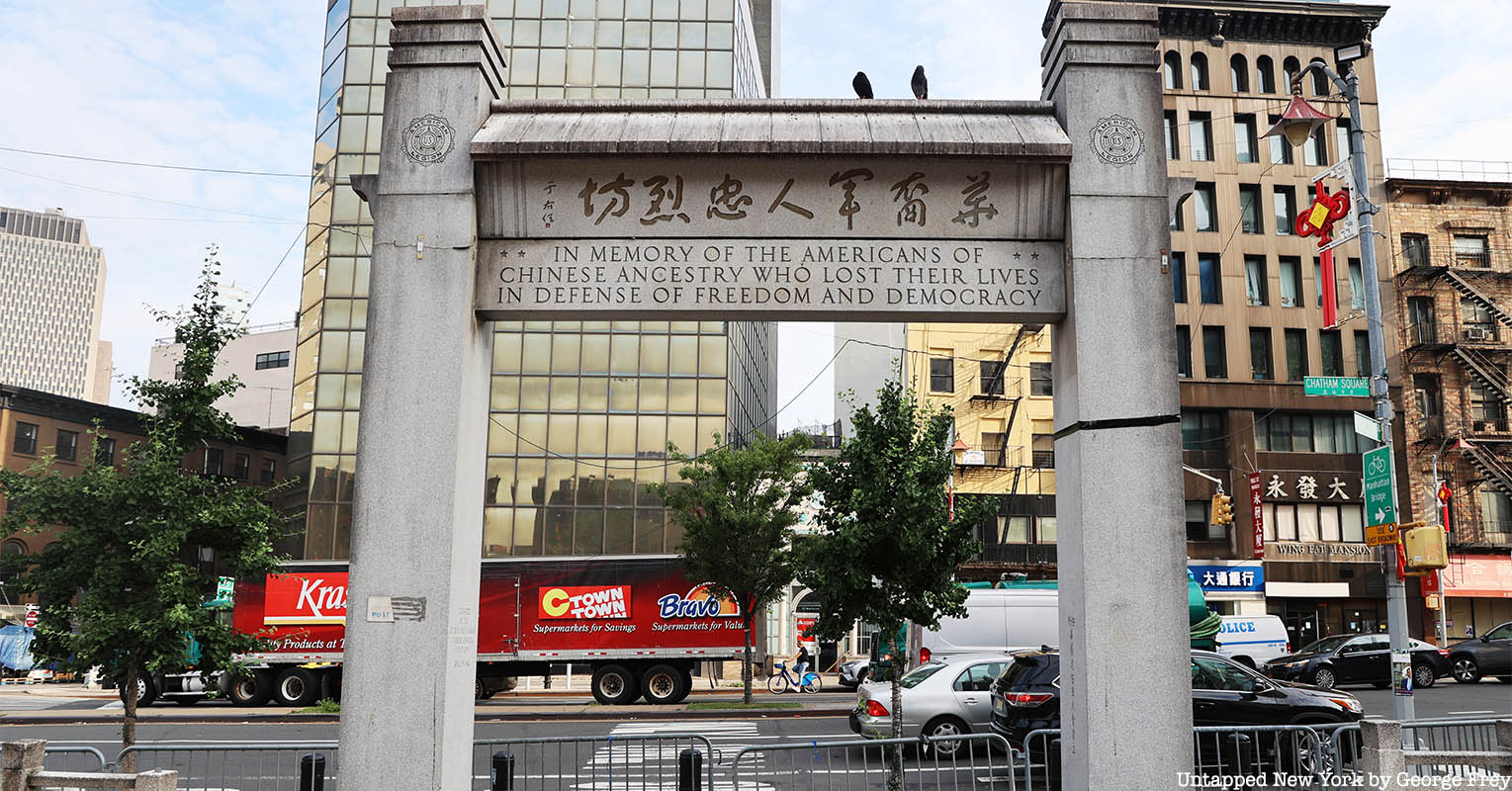On June 22, the New York City Landmarks Preservation Commission unanimously voted to designate the Kimlau War Memorial at Kimlau Square in Chinatown, as well as the Aakawaxung Munahanung Archaeological Site on Staten Island — the best-preserved known archaeological site associated with an Indigenous presence in New York City.. The Kimlau War Memorial is a public monument dedicated to the contributions of Chinese Americans. Although there are several New York City landmarks in Chinatown, this is the first that specifically recognizes Chinese American history and culture.
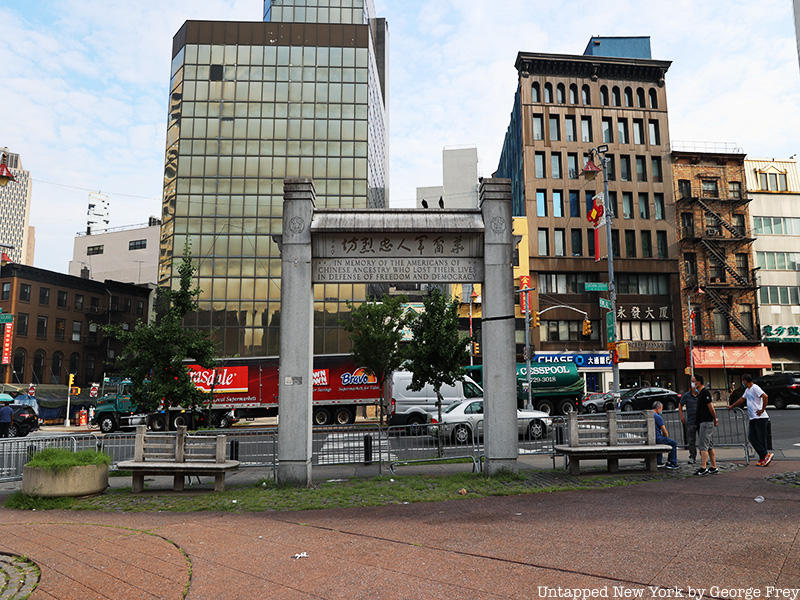
“I am proud that today the Commission designated its first landmark specifically recognizing New York City’s many thousands of years of Native American history and culture, and also the first landmark recognizing the contributions of its Chinese American community,” said Landmarks Preservation Commission Chair Sarah Carroll. “As part of the agency’s equity framework, I am committed to advancing the designation of landmarks that better represent the city’s diversity and tell the story of all New Yorkers. The recognition and celebration of the history that these two sites embody is so important, and both are within city parks and accessible for the public to enjoy.”
The Kimlau War Memorial is a granite ceremonial gateway located in Kimlau Square at the intersection of Chatham Square, Oliver Street, and East Broadway. The arch, sponsored by the American Legion, honors Chinese American soldiers who lost their lives while serving in the U.S. military. The arch and the pair of benches have stood as a community monument for almost 60 years, blending traditional Chinese architectural forms with a modern aesthetic.
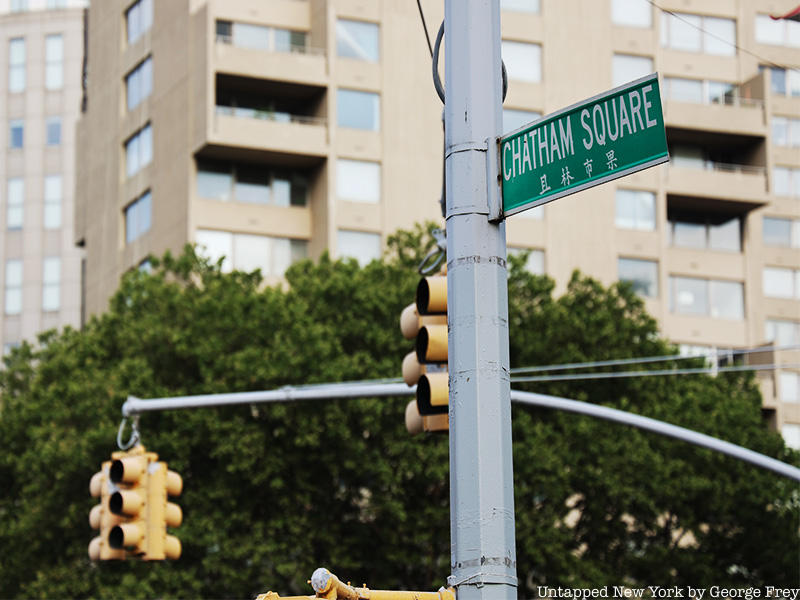
The arch and plaza are named after Second Lieutenant Benjamin Ralph Kimlau, who died in 1944 during World War Two. Kimlau lived in Chinatown with his family before enrolling at the Pennsylvania Military College, where he graduated as the only Chinese American in his class in 1942. Kimlau served in the U.S. Army Field Artillery Branch despite facing harsh discrimination. He died while attacking Japanese military installations in the South Pacific at age 26.
The memorial was designed by prominent Chinese American architect Poy Gum Lee. Born on Mott Street in 1900, Lee centered his career around designing buildings for the Chinese community. Lee was educated at the Pratt Institute, MIT, and Columbia University. He took work as a draftsman in New York and Chicago in the early 1920s at the firms J.B. Snook & Sons and Murphy, McGill & Hamlin. Lee became a staff architect for the YMCA in China, where he spent the next two decades designing institutional and commercial buildings combining Art Deco and International Styles with traditional Chinese forms. After World War Two, Lee returned to New York, and became a senior architect for the New York City Housing Authority, as well as owner of an architecture practice in Chinatown. Lee built structures for Chinese community organizations and storefront and façade alterations for small commercial clients.
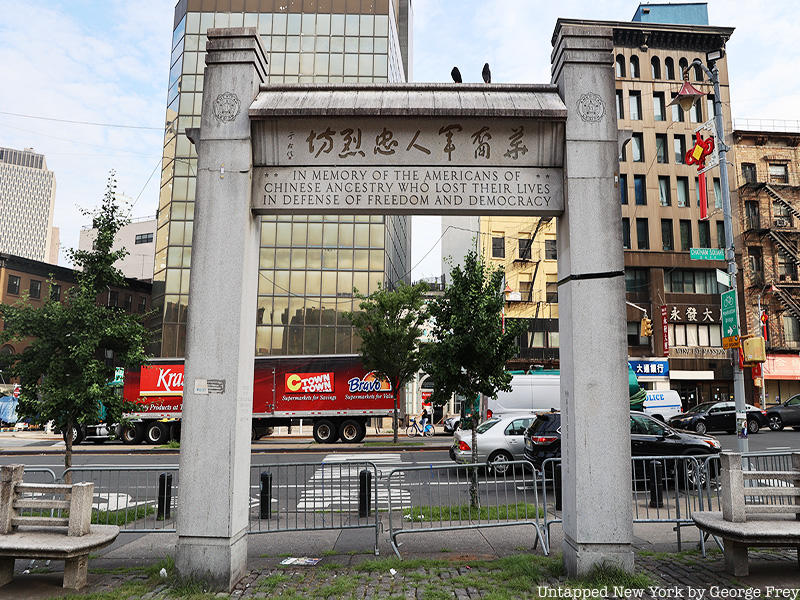
The memorial itself is a restrained modern granite ceremonial gateway with a peaked roof. Inscribed on the nearly 19-foot-high arch is a dedication in English and Chinese to Chinese American war casualties. As part of Kimlau Square, the arch serves as the site of an annual celebration to honor war veterans and as a symbol of Chinese American patriotism. The arch itself is a typical Chinese architectural element used as both a physical gateway and a decorative symbol. In 1999, the memorial was restored in conjunction with the reconstruction of Chatham Square, and it was rededicated in 2000 in honor of Post 1291’s 55th anniversary.
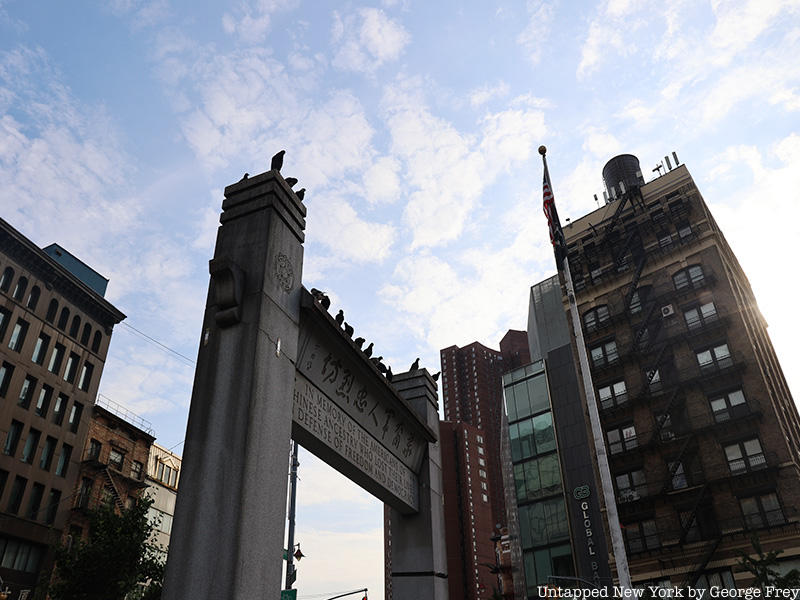
“It is with great pride that we celebrate the designation of the Kimlau War Memorial Arch as a Landmark by the New York City Landmarks Preservation Commission in this, the 76th Anniversary of the founding of the Lt. B.R. Kimlau Chinese Memorial Post 1291 of the American Legion which was instrumental in the creation of the monument in 1962,” said Commander Randall T. Eng, Lt. B.R. Kimlau Post 1291, American Legion. “For nearly 60 years it has stood as a memorial to those in the Chinese American community who made the ultimate sacrifice in defense of their country, the United States of America. In light of the recent wave of anti-Asian violence and bigotry, the Arch serves as a reminder of the contributions of Asian-Americans to the defense of freedom and democracy in times of great national peril. We thank the Commission for this fitting tribute.”
Next, check out NYC’s China Institute, the Oldest Chinese Bicultural Non-Profit in America!






